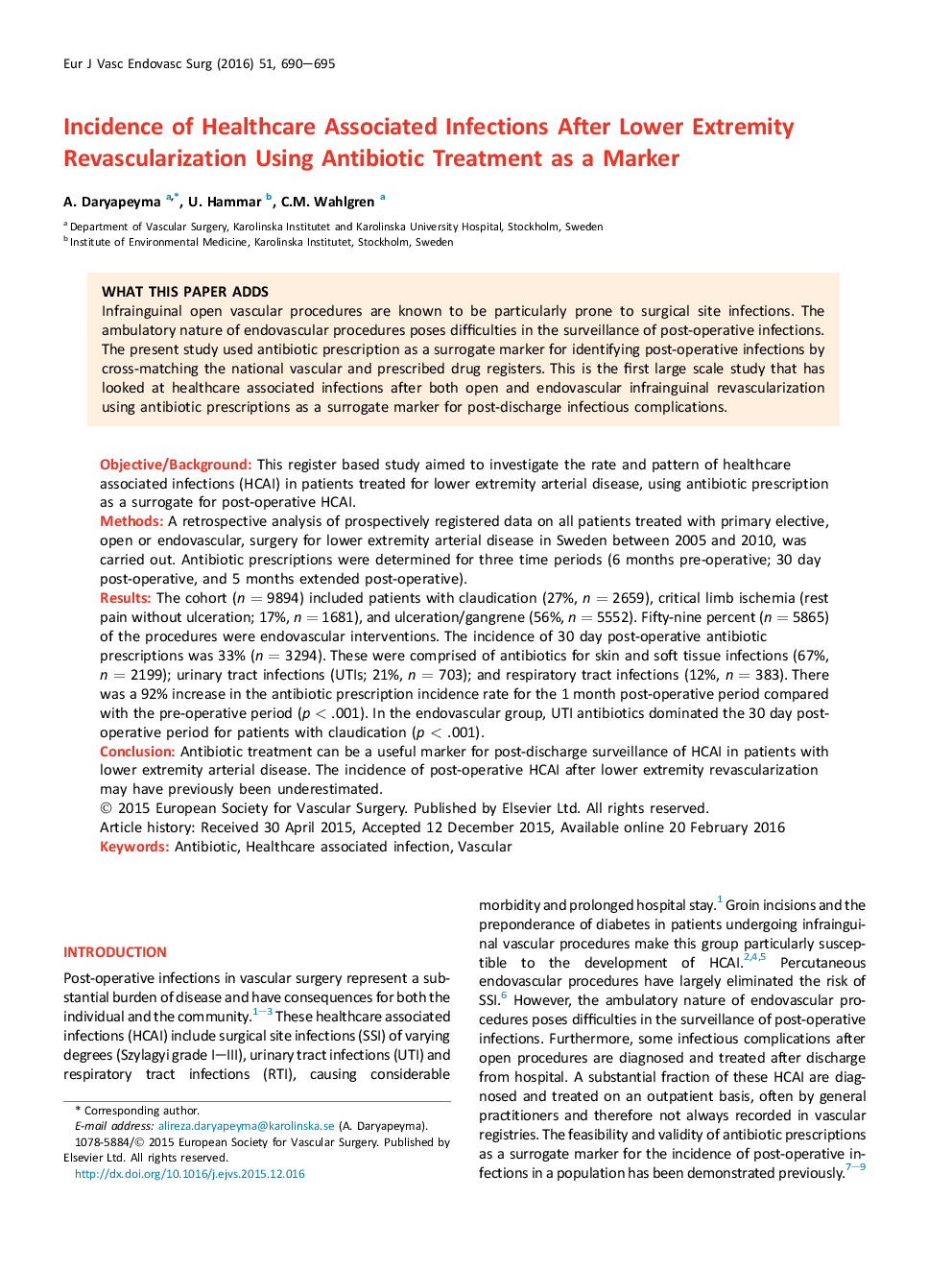| Article ID | Journal | Published Year | Pages | File Type |
|---|---|---|---|---|
| 2911759 | European Journal of Vascular and Endovascular Surgery | 2016 | 6 Pages |
Objective/BackgroundThis register based study aimed to investigate the rate and pattern of healthcare associated infections (HCAI) in patients treated for lower extremity arterial disease, using antibiotic prescription as a surrogate for post-operative HCAI.MethodsA retrospective analysis of prospectively registered data on all patients treated with primary elective, open or endovascular, surgery for lower extremity arterial disease in Sweden between 2005 and 2010, was carried out. Antibiotic prescriptions were determined for three time periods (6 months pre-operative; 30 day post-operative, and 5 months extended post-operative).ResultsThe cohort (n = 9894) included patients with claudication (27%, n = 2659), critical limb ischemia (rest pain without ulceration; 17%, n = 1681), and ulceration/gangrene (56%, n = 5552). Fifty-nine percent (n = 5865) of the procedures were endovascular interventions. The incidence of 30 day post-operative antibiotic prescriptions was 33% (n = 3294). These were comprised of antibiotics for skin and soft tissue infections (67%, n = 2199); urinary tract infections (UTIs; 21%, n = 703); and respiratory tract infections (12%, n = 383). There was a 92% increase in the antibiotic prescription incidence rate for the 1 month post-operative period compared with the pre-operative period (p < .001). In the endovascular group, UTI antibiotics dominated the 30 day post-operative period for patients with claudication (p < .001).ConclusionAntibiotic treatment can be a useful marker for post-discharge surveillance of HCAI in patients with lower extremity arterial disease. The incidence of post-operative HCAI after lower extremity revascularization may have previously been underestimated.
